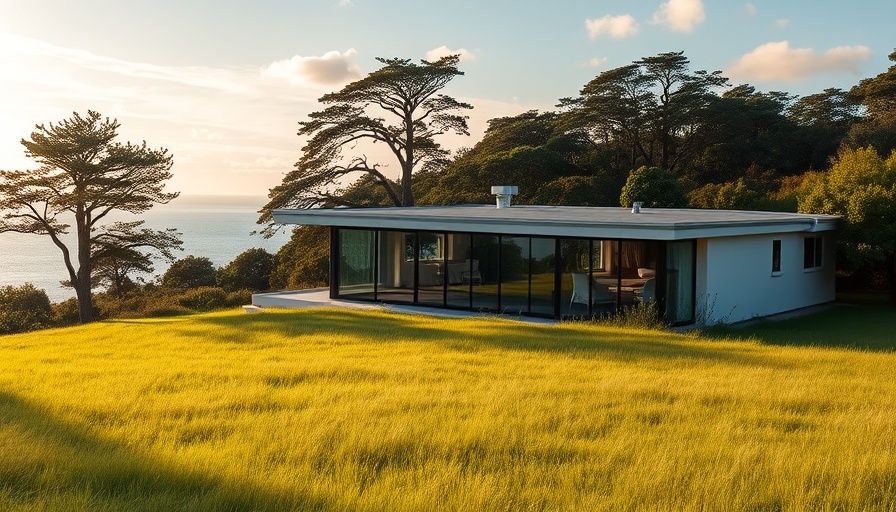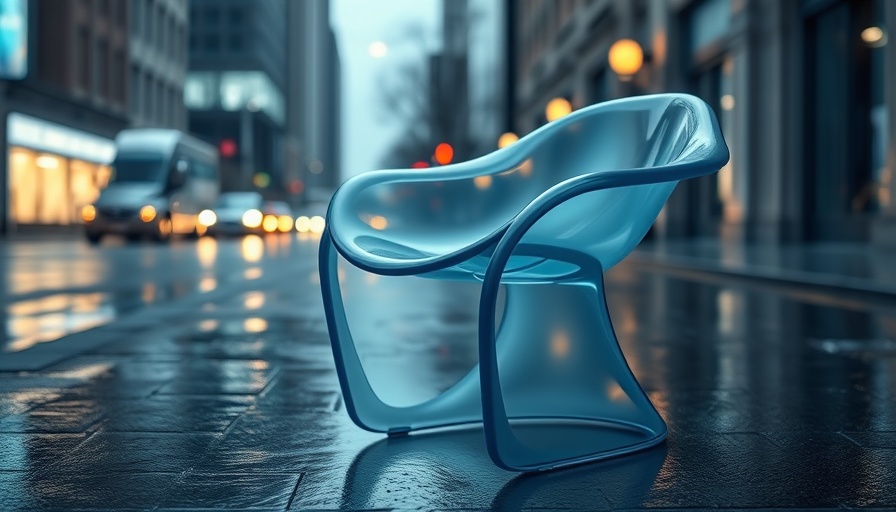
Discovering the Beauty of the Coastal Workspace
In an era where remote working has become the norm for many digital nomads, the concept of workspace is evolving. The recent design of a stunning coastal home by Bross and Nick Flygt Arkitekter perfectly encapsulates this change. Built with a focus on harmony with nature, this home isn’t just a dwelling—it's a beacon for those seeking inspiration and comfort while working remotely.
Why This Design Matters
The Horse House, located on Sweden's coastline, goes beyond traditional architectural aesthetics. The design is intentionally understated, allowing the serene environment to play a prominent role. For remote workers, this connection to nature can significantly enhance productivity and well-being, as studies show that natural light and pleasing surroundings directly affect mood and concentration.
The Ergonomics of the Horse House
One of the defining aspects of the Horse House is its ergonomic layout. Thoughtfully designed workspaces within the home prioritize the health of its inhabitants. Furnishings are strategically selected to reduce strain and enhance comfort, supporting the idea that a mindful approach to workspace design is crucial for long-term success in remote work settings.
Integrating Nature into Workspaces
A home like this emphasizes the importance of integrating nature into our working environments, a practice that is not only visually appealing but also crucial for mental health. Natural elements, such as indoor plants and views of the ocean, create a calming atmosphere that can boost creativity. The sound of waves and a gentle sea breeze can stimulate focus and spark innovative ideas, making it a prime example for those designing their own remote workspaces.
Tips for Creating Your Coastal-inspired Workspace
While not everyone can build a coastal home, there are several takeaways from the Horse House that anyone can apply in their own workspace:
- Prioritize Natural Light: Position your desk near windows to maximize sunlight.
- Choose Comfortable Furniture: Invest in ergonomic chairs and desks that support your body.
- Incorporate Nature: Add plants or natural elements to improve air quality and add aesthetic value.
- Create a Distraction-free Zone: Ensure your workspace is quiet and organized to boost focus.
Fostering a Healthy Work-life Balance
The Horse House stands as a reminder that our work environments significantly affect both our productivity and our health. As digital nomads navigate the complexities of remote work, prioritizing wellness through thoughtful workspace design will become increasingly essential. Balancing work with relaxation is achievable with the right elements in place.
Future Trends for Remote Workspaces
As the trends shift towards more personalized remote working environments, expect innovations that blend technology with comfort. Homes like the Horse House will inspire further developments in ergonomic designs and the incorporation of sustainable materials, ensuring that personal workspaces are both functional and connected to the natural environment. This is not just a trend; it's a new philosophy in how we perceive our work environments.
Digital nomads are increasingly empowered to create spaces that encourage productivity and comfort. Whether it’s a coastal retreat or a cozy nook in an urban apartment, the principles seen in the Horse House can serve as a foundation for anyone looking to enhance their working experience.
As design continues to evolve in response to the growing remote work culture, now is the time to rethink how we create our workspaces to ensure they support a healthy and productive lifestyle.
 Add Row
Add Row  Add
Add 




Write A Comment